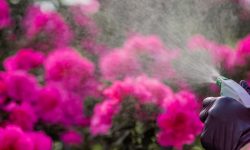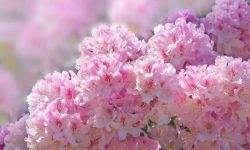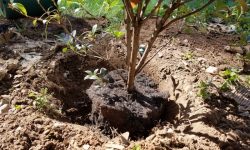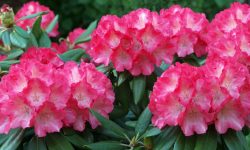Gladiolus stand out as striking summer bloomers, admired for their towering flower spikes and vivid hues that bring bold color and elegance to garden beds. But when these beauties fail to bloom, it can be deeply frustrating. Understanding the reasons behind this problem is the first step toward restoring their dazzling display. Bloom issues with gladiolus are more common than many gardeners realize and can often be resolved with a few targeted changes in care and growing conditions.
In this article, we’ll explore why your gladiolus may not be blooming and offer quick yet effective solutions to help you bring those spectacular flowers back to life. From soil health to bulb storage, we’ll cover every detail you need to diagnose and fix the issue. If your gladiolus have green leaves but no flowers, or the flower stalks simply don’t appear, keep reading to find out exactly what to do.
Understanding the Gladiolus Bloom Cycle
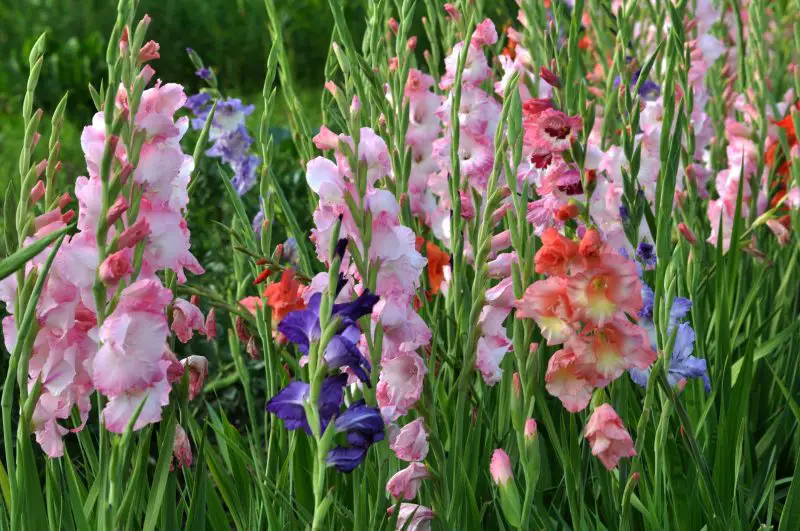
Gladiolus bulbs, also known as corms, follow a specific growth cycle that depends on warmth, sunlight, and nutrient availability. When planted in the right environment, they sprout leaves, form flower spikes, and eventually bloom in vibrant colors like red, purple, pink, yellow, and white. But any disruption to this cycle can halt the blooming process altogether.
A healthy gladiolus usually takes about 70 to 90 days to bloom after planting, depending on the variety and environmental conditions. During this time, the plant prioritizes leaf development, energy storage in the corm, and ultimately the formation of flowers. If any part of this cycle is interrupted—such as poor corm quality, nutrient deficiency, or improper watering—it can delay or completely prevent blooming.
Poor Sunlight Exposure and Shaded Conditions
One of the most common reasons gladiolus fail to bloom is inadequate sunlight. Gladiolus are sun-loving plants that need full sun exposure for at least six to eight hours a day. If they are planted in partial shade, near large shrubs, under trees, or close to buildings that cast long shadows, the lack of direct light can weaken the plant’s ability to produce flowers.
Sunlight plays a critical role in photosynthesis, which fuels flower production. Without enough sunlight, the plant may grow tall and leafy but will not have the energy needed to form flower spikes. The solution is to ensure your gladiolus are planted in a spot that receives uninterrupted sunlight throughout the day, especially in the morning and early afternoon hours.
Overcrowded or Compacted Corms
Gladiolus bulbs multiply underground over time, forming clusters of new corms and cormlets. If not separated and replanted periodically, these clusters become overcrowded. Overcrowding leads to competition for water, nutrients, and light—all of which can reduce the energy available for blooming. In some cases, overcrowded corms may produce only leaves and no flowers at all.
To fix this, dig up the corms at the end of the growing season, allow them to dry, and store them properly. Replant only the largest, healthiest corms in the spring and discard any that are soft, diseased, or shriveled. Spacing them properly—typically 6 to 8 inches apart—ensures they have enough room to thrive and bloom.
Nutrient Deficiency and Unbalanced Fertilization
Nutrient imbalances are another major cause of non-blooming gladiolus. While nitrogen is essential for leaf and stem development, too much nitrogen can result in lush foliage but no flowers. Gladiolus need a well-balanced fertilizer that includes phosphorus and potassium to support flower production.
A lack of phosphorus, in particular, will often prevent blooming. If the soil is too rich in nitrogen or lacking in phosphorus, the plant’s energy is diverted away from flower formation. To address this, choose a fertilizer with a lower nitrogen ratio and higher phosphorus content—something like a 5-10-10 blend. Apply it early in the growth stage and once again just as the flower spike begins to emerge.
Improper Planting Depth and Timing
The depth at which gladiolus corms are planted plays a subtle yet significant role in blooming. If planted too shallowly, the corms may be exposed to fluctuating soil temperatures and drying out. This instability can stress the plant and prevent flowers from forming. On the other hand, planting too deeply can delay emergence and reduce bloom time.
The ideal planting depth is generally about four inches deep for standard-size corms, or slightly deeper in sandy soils. Along with depth, timing matters too. Gladiolus are tender perennials and should only be planted once the danger of frost has passed and soil temperatures consistently reach above 55°F (13°C). Late planting may result in a shortened growing season and fewer blooms.
Insufficient Watering or Inconsistent Moisture
While gladiolus do not like soggy conditions, they do need consistent moisture, especially during the early stages of growth and bud formation. Dry periods during critical bloom development can cause buds to shrivel or not appear at all. On the flip side, overwatering can rot the corms and lead to poor health.
A balanced watering routine is key. Water deeply once or twice a week, depending on weather and soil conditions, ensuring the soil remains evenly moist but not saturated. Mulching around the base of the plants can help retain moisture and prevent weeds that compete for nutrients.
Pests and Disease Problems Affecting Blooms
Certain pests, like thrips, aphids, and cutworms, can directly damage gladiolus plants and their developing flower spikes. Thrips, in particular, are a notorious problem for gladiolus. These tiny insects suck sap from the plant, causing deformed or absent blooms. If left untreated, they can completely destroy the plant’s flowering potential.
In addition to pests, fungal diseases such as botrytis blight or fusarium wilt can weaken the plant and prevent blooming. These diseases often thrive in wet conditions or poorly drained soil. To manage pest problems, regularly inspect the leaves and stems for signs of damage. Use insecticidal soap or neem oil as a treatment. For fungal issues, improve air circulation, avoid overhead watering, and treat with an appropriate fungicide when needed.
Weak or Undeveloped Corms
Sometimes, gladiolus simply do not bloom because the corms are too small or underdeveloped to produce flowers. Corms store the energy needed to fuel the entire bloom cycle, so if they’re weak, they may only have enough reserves to produce leaves.
This is especially true for new cormlets or small divisions from previous seasons. These younger corms often need another year of growth before they are mature enough to bloom. Choosing robust, full-size corms for planting will increase your chances of healthy flowering. When storing corms over winter, make sure they remain dry and disease-free to maintain their strength for the next season.
Cold or Short Growing Season
In cooler regions with short summers, gladiolus may not have enough time to complete their blooming cycle before the weather begins to cool again. If the planting is delayed or temperatures remain low for extended periods, flower formation can be delayed or skipped altogether.
To overcome this, gardeners in colder zones often start their gladiolus indoors in pots and transplant them once the weather warms. You can also choose early-blooming varieties that require fewer days to flower. Using black mulch or raised beds can help warm the soil and speed up growth in early spring.
Soil pH and Poor Drainage Issues
Gladiolus prefer well-drained soil with a slightly acidic to neutral pH level—generally between 6.0 and 7.0. If the soil is too alkaline or acidic, nutrient uptake may be hindered, even if fertilizers are applied. Similarly, poor drainage can suffocate roots and promote root rot, making it difficult for the plant to thrive and produce blooms.
To address this, conduct a soil test to evaluate the pH and nutrient levels. Amend the soil as needed with compost or sulfur to lower pH, or lime to raise it. Ensure good drainage by incorporating organic matter or planting in raised beds if necessary.
Storing and Handling Corms Properly
Improper storage of gladiolus corms during the off-season can also lead to bloom failure. If corms are stored in damp or humid conditions, they can develop mold, rot, or become soft. On the other hand, excessively dry conditions can cause them to shrivel and lose vitality.
After digging up corms in the fall, cure them by letting them dry in a warm, airy space for one to two weeks. Remove the old base corms and store only the new, healthy ones in a cool, dry, and dark area with good ventilation. Label them if necessary, and check periodically for signs of decay. Starting the season with healthy corms gives your gladiolus the best chance of blooming successfully.
Encouraging Reblooming in Gladiolus
Although gladiolus are typically grown as single-season bloomers, in some regions, it’s possible to encourage a second round of blooms with proper care. Cutting back spent flower spikes promptly encourages the plant to focus energy on developing new ones. Continued fertilization and watering after the first bloom can sometimes result in a smaller second flush of flowers.
To promote reblooming in warmer zones, stagger your planting every two weeks from spring through early summer. This strategy ensures continuous flowering and may give late-planted bulbs enough time to produce flowers before the season ends.
When to Give Up on Non-Blooming Gladiolus
If your gladiolus consistently fail to bloom year after year despite your efforts, it may be time to start fresh. Sometimes, corms become too old, diseased, or genetically weak to flower. Replacing them with new, high-quality bulbs from a reputable source can rejuvenate your garden and restore the spectacular display you’re hoping for.
Choose cultivars known for reliable blooming and disease resistance. Read planting instructions carefully and monitor soil conditions. With new bulbs and proper care, you’ll greatly improve your chances of success in the next growing season.
FAQs About Gladiolus Blooming Issues
Why are my gladiolus only growing leaves but no flowers?
This typically indicates either too much nitrogen, lack of sunlight, or immature corms. Check your fertilizer balance, sun exposure, and the size of the corms used.
Can gladiolus bloom in partial shade?
While they may survive, gladiolus need full sun to reliably bloom. Partial shade can lead to poor flower development or none at all.
How often should I fertilize gladiolus for blooming?
Fertilize once at planting and again when the flower spike begins to appear. Use a phosphorus-rich fertilizer and avoid high-nitrogen formulas.
Should I dig up gladiolus every year?
In most climates, yes. Digging up and storing the corms prevents rot and encourages healthy regrowth and blooming the following season.
Can I leave gladiolus in the ground all year?
Only in USDA zones 8–11, where winters are mild. In colder zones, corms must be lifted and stored to avoid freezing and rot.

